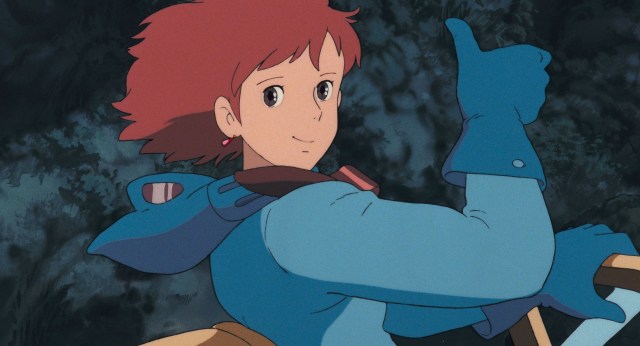
For fans of the legendary anime studio, Christmas has come early.
Christmas is still a week away, but Studio Ghibli has generously decided to give us 250 presents a week early. OK, maybe the yuletide timing is just a coincidence, but in any case, the legendary anime production house has just released its fourth and final batch of free-to-use images from its anime films, and it saved some of the best for last.
As with the previous bundles, Ghibli has made 50 high-quality stills from each movie free-to-use “for reasonable purposes.” This time, that finally includes the very first Ghibli anime, Laputa: Castle in the Sky.
Originally released in 1986, Laputa comes from a time when the anime industry as a whole, and especially the traditionally minded staff at Ghibli, were still doing essentially all of their work by hand. For artists at the top of their game, the result was lush painted backgrounds and cel coloring with a warm, organic feel to it, especially in the rendering of the floating island’s greenery.
Of course, calling Laputa “the first Ghibli anime” is somewhat open to debate. Yes, it is the first film released after the formal founding of the company, but Nausicaa of the Valley of the Wind, which premiered in 1984, was created through the passion of many of the key figures who would go on to found Ghibli.
Nausicaa is really the first theatrical work in which Hayao Miyazaki had the sort of complete directorial freedom to fully display the storytelling sensibilities and thematic elements that would become the company’s signature style.
Of course, Miyazaki isn’t the only Ghibli director, as fellow co-founder Isao Takahata’s works, such as Only Yesterday, have a charm all their own.
Only Yesterday’s artwork is particularly interesting in that when the film was released in 1991, it wasn’t a period piece. However, the then-contemporary setting looks quite different from the Japan of today, in terms of fashion, architecture, and more, making the anime a window into Japan’s recent-yet-fuzzy past for modern audiences.
The new batch of images also has two surprise inclusions, starting with The Red Turtle.
A co-production between Ghibli and French production company Wild Bunch, Ghibli’s Toshio Suzuki and Isao Takahata served as producers on the film, which was directed by Michael Dudok de Wit. As a result, cinephiles may have differing opinions on whether or not The Red Turtle qualifies as full-fledged Ghibli film or not, but the artwork, particularly the environments in which the story takes place, are frequently breathtaking.
The other surprise appearance is On Your Mark.
Unlike the theatrical features discussed above, On Your Mark was a music video for the song of the same name by J-pop stars Chage and Aska. As such, it’s only a few minutes long, but that short run time means nearly every frame is packed with visual detail, and it even manages to tell a concise yet compelling story despite having no character dialogue whatsoever.
With this fourth batch of images, Ghibli has now accounted for all of their theatrical anime so far except Grave of the Fireflies, which is the only film the studio produced which it doesn’t control the rights to. So does that mean this is the end of Ghibli’s free image generosity? Maybe, but then again not. The inclusion of On Your Mark gives us just a tiny glimmer of hope that maybe at some point in the future Ghibli might consider releasing stills from the anime shorts that play only at the Ghibli Museum in Tokyo, like the sequel to My Neighbor Totoro. In the meantime, though, we’re happy to spend time admiring the art from these films, and the new batch can be found here.
Source: Studio Ghibli
Featured image: Studio Ghibli (1, 2, 3) (edited by SoraNews24)
Top image: Studio Ghibli
Insert images: Studio Ghibli (1, 2, 3, 4, 5)
● Want to hear about SoraNews24’s latest articles as soon as they’re published? Follow us on Facebook and Twitter!
Follow Casey on Twitter, where he’s now got “On Your Mark” stuck in his head.

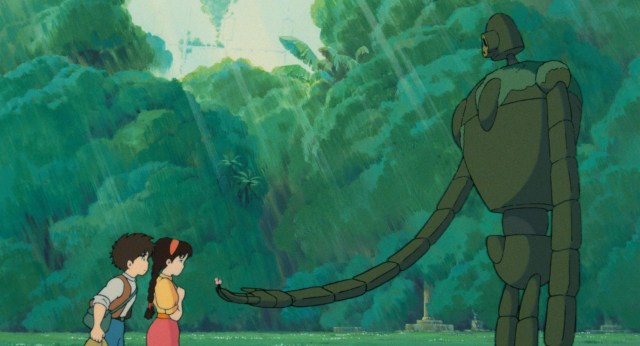
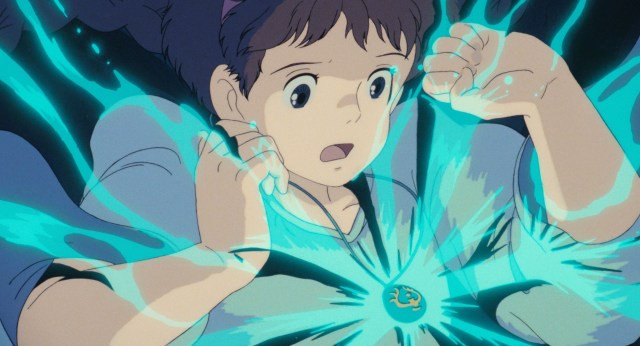
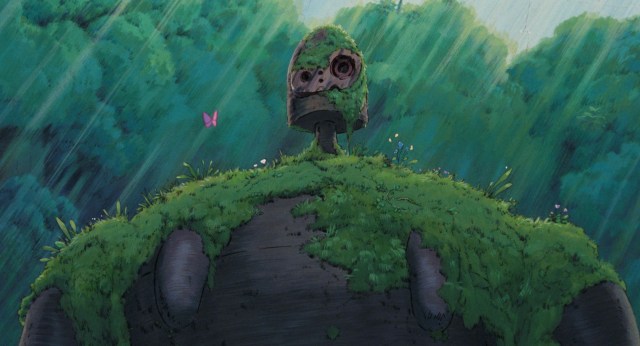
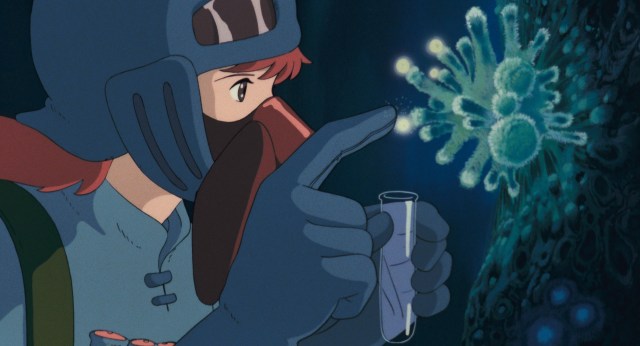
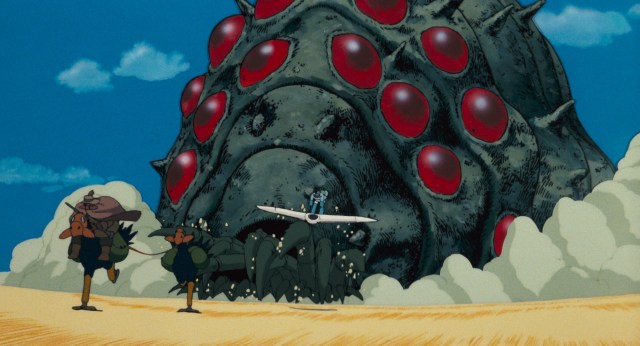

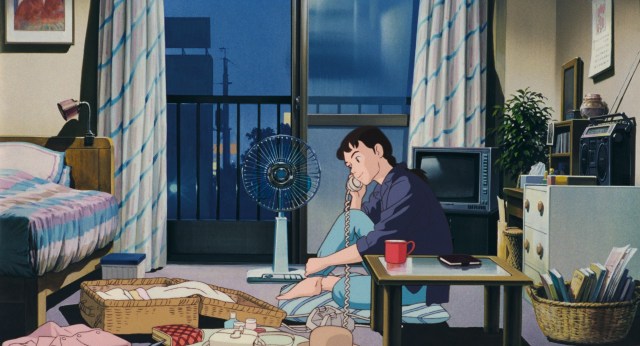
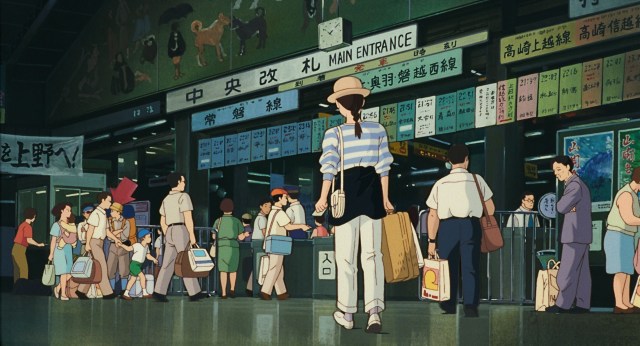
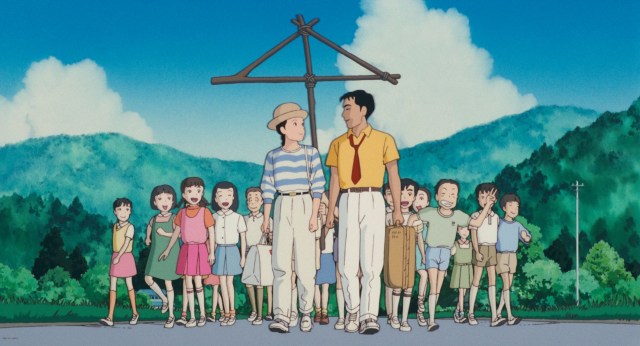


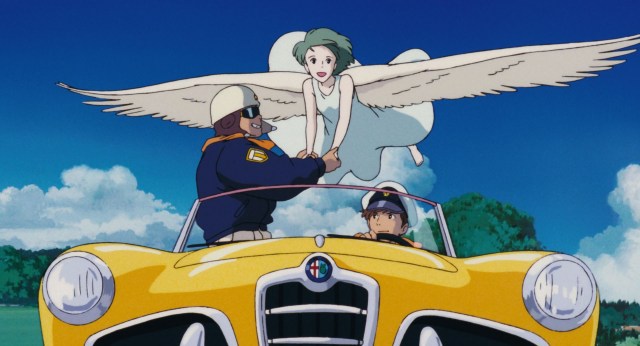
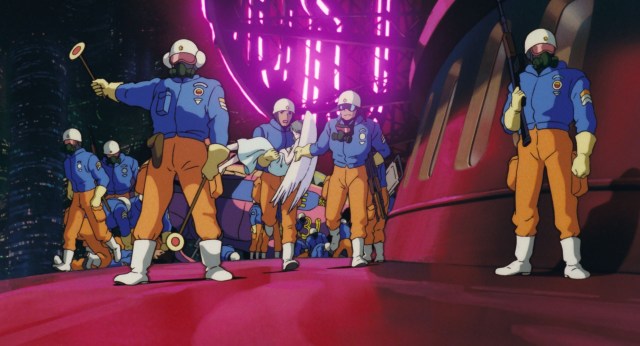
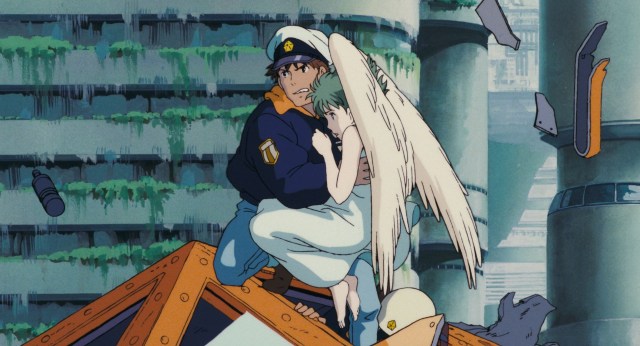
 Studio Ghibli releases 250 more free-to-download/use images from five films, and Totoro is here!
Studio Ghibli releases 250 more free-to-download/use images from five films, and Totoro is here! Studio Ghibli releases 300 more images from six movies free to download online
Studio Ghibli releases 300 more images from six movies free to download online Ghibli releases free-to-use artwork from Castle in the Sky Laputa, comes with standard disclaimer
Ghibli releases free-to-use artwork from Castle in the Sky Laputa, comes with standard disclaimer Studio Ghibli unveils new animated film set for release in Japan next year
Studio Ghibli unveils new animated film set for release in Japan next year Studio Ghibli co-founder Toshio Suzuki receives lifetime achievement honor at Annie awards
Studio Ghibli co-founder Toshio Suzuki receives lifetime achievement honor at Annie awards Private booths are coming to Japan’s Shinkansen bullet trains even sooner than we’d thought【Video】
Private booths are coming to Japan’s Shinkansen bullet trains even sooner than we’d thought【Video】 Rakuten randomly offers 58 New Year’s osechi feasts in Japan, but did we get a star or a dud?
Rakuten randomly offers 58 New Year’s osechi feasts in Japan, but did we get a star or a dud?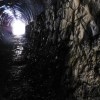 The oldest tunnel in Japan is believed to be haunted, and strange things happen when we go there
The oldest tunnel in Japan is believed to be haunted, and strange things happen when we go there Daiso unveils new official mascot, Daizo the elephant
Daiso unveils new official mascot, Daizo the elephant Coca-Cola Japan unveils new sakura design bottle for cherry blossom season 2019
Coca-Cola Japan unveils new sakura design bottle for cherry blossom season 2019 Yokohama restaurant serves fried axolotl, along with giant isopod, camel, and crocodile
Yokohama restaurant serves fried axolotl, along with giant isopod, camel, and crocodile Cosplay costume room tour by Japan’s number-one cosplayer Enako is an eye-opener【Video】
Cosplay costume room tour by Japan’s number-one cosplayer Enako is an eye-opener【Video】 Four Shinto shrines to pray for love at in Japan to start the New Year
Four Shinto shrines to pray for love at in Japan to start the New Year Original Totoro plush toys from 80s and 90s re-issued for Studio Ghibli exhibition
Original Totoro plush toys from 80s and 90s re-issued for Studio Ghibli exhibition Dragon Quest Burgers and Slime drinks are coming to McDonald’s Japan【Video】
Dragon Quest Burgers and Slime drinks are coming to McDonald’s Japan【Video】 Starbucks Japan ready to get Year of the Horse started with adorable drinkware and plushies【Pics】
Starbucks Japan ready to get Year of the Horse started with adorable drinkware and plushies【Pics】 Japanese beef bowl chain Sukiya’s 2026 Smile Box lucky bag basically pays for itself
Japanese beef bowl chain Sukiya’s 2026 Smile Box lucky bag basically pays for itself Hayao Miyazaki says Happy New Year to Studio Ghibli fans with new art for Year of the Horse
Hayao Miyazaki says Happy New Year to Studio Ghibli fans with new art for Year of the Horse Cup Noodle tries an authentic Jiro-style ramen, but something’s not quite right
Cup Noodle tries an authentic Jiro-style ramen, but something’s not quite right The best Starbucks Japan Frappuccinos we want to drink again in 2026
The best Starbucks Japan Frappuccinos we want to drink again in 2026 We revisited Sweets Paradise after a decade to see if Japan’s dessert buffet still delivers
We revisited Sweets Paradise after a decade to see if Japan’s dessert buffet still delivers That time Seiji called JASRAC to ask why he didn’t get paid royalties for his song being on TV
That time Seiji called JASRAC to ask why he didn’t get paid royalties for his song being on TV We found possibly the quietest Japanese-style hotel in Tokyo’s bustling Shinjuku district
We found possibly the quietest Japanese-style hotel in Tokyo’s bustling Shinjuku district Pizza Hut Japan’s hot lucky bags are perfect for a New Year’s pizza party
Pizza Hut Japan’s hot lucky bags are perfect for a New Year’s pizza party Japan’s oldest largetooth sawfish in captivity back on display in Mie Prefecture
Japan’s oldest largetooth sawfish in captivity back on display in Mie Prefecture 7-Eleven Japan starts new temporary luggage storage service in over 300 branches
7-Eleven Japan starts new temporary luggage storage service in over 300 branches Disillusionment at Tsukiji’s tourist-target prices led us to a great ramen restaurant in Tokyo
Disillusionment at Tsukiji’s tourist-target prices led us to a great ramen restaurant in Tokyo Starbucks teams up with 166-year-old Kyoto doll maker for Year of the Horse decorations【Photos】
Starbucks teams up with 166-year-old Kyoto doll maker for Year of the Horse decorations【Photos】 Tokyo considering law requiring more trash cans following litter increase in heavily touristed area
Tokyo considering law requiring more trash cans following litter increase in heavily touristed area Tokyo’s Tsukiji sushi neighborhood asks tour groups to stay away for the rest of the month
Tokyo’s Tsukiji sushi neighborhood asks tour groups to stay away for the rest of the month Tokyo event lets you travel back in time, for free, to celebrate 100 years since Showa era start
Tokyo event lets you travel back in time, for free, to celebrate 100 years since Showa era start Japan may add Japanese language proficiency, lifestyle classes to permanent foreign resident requirements
Japan may add Japanese language proficiency, lifestyle classes to permanent foreign resident requirements Sanrio theme park in Japan announces plans to expand into a Sanrio resort
Sanrio theme park in Japan announces plans to expand into a Sanrio resort Stamina-destroying “Paralysis Noodles” are Tokyo’s newest over-the-top ramen innovation
Stamina-destroying “Paralysis Noodles” are Tokyo’s newest over-the-top ramen innovation Survey asks foreign tourists what bothered them in Japan, more than half gave same answer
Survey asks foreign tourists what bothered them in Japan, more than half gave same answer Japan’s human washing machines will go on sale to general public, demos to be held in Tokyo
Japan’s human washing machines will go on sale to general public, demos to be held in Tokyo Japan’s deadliest food claims more victims, but why do people keep eating it for New Year’s?
Japan’s deadliest food claims more victims, but why do people keep eating it for New Year’s? We deeply regret going into this tunnel on our walk in the mountains of Japan
We deeply regret going into this tunnel on our walk in the mountains of Japan Studio Ghibli releases Kodama forest spirits from Princess Mononoke to light up your home
Studio Ghibli releases Kodama forest spirits from Princess Mononoke to light up your home Major Japanese hotel chain says reservations via overseas booking sites may not be valid
Major Japanese hotel chain says reservations via overseas booking sites may not be valid Put sesame oil in your coffee? Japanese maker says it’s the best way to start your day【Taste test】
Put sesame oil in your coffee? Japanese maker says it’s the best way to start your day【Taste test】 No more using real katana for tourism activities, Japan’s National Police Agency says
No more using real katana for tourism activities, Japan’s National Police Agency says Starbucks Japan reveals new sakura drinkware collection, inspired by evening cherry blossoms
Starbucks Japan reveals new sakura drinkware collection, inspired by evening cherry blossoms Updated cherry blossom forecast shows extra-long sakura season for Japan this year
Updated cherry blossom forecast shows extra-long sakura season for Japan this year Studio Ghibli’s first anime heroine (no, not Nausicaa) gets an awesome new figure【Photos】
Studio Ghibli’s first anime heroine (no, not Nausicaa) gets an awesome new figure【Photos】 Studio Ghibli releases new merchandise to celebrate Laputa: Castle in the Sky anniversary
Studio Ghibli releases new merchandise to celebrate Laputa: Castle in the Sky anniversary Studio Ghibli sunglasses let you channel anime film characters from Laputa: Castle in the Sky
Studio Ghibli sunglasses let you channel anime film characters from Laputa: Castle in the Sky Studio Ghibli releases new image albums and soundtracks for fans
Studio Ghibli releases new image albums and soundtracks for fans Studio Ghibli fans surprised to find hidden images in Grave of the Fireflies anime poster
Studio Ghibli fans surprised to find hidden images in Grave of the Fireflies anime poster Mt. Fuji becomes Studio Ghibli’s Laputa following recent typhoon 【Photos】
Mt. Fuji becomes Studio Ghibli’s Laputa following recent typhoon 【Photos】 Exhibition honoring Studio Ghibli’s late Isao Takahata is now open in Tokyo’s Azabudai Hills
Exhibition honoring Studio Ghibli’s late Isao Takahata is now open in Tokyo’s Azabudai Hills Embroidered Laputa: Castle in the Sky clock catches the attention of Studio Ghibli
Embroidered Laputa: Castle in the Sky clock catches the attention of Studio Ghibli Studio Ghibli releases 400 images from eight movies free to download online
Studio Ghibli releases 400 images from eight movies free to download online Ghibli film secret revealed as Japan Self-Defense Forces soldier deciphers secret code in Laputa
Ghibli film secret revealed as Japan Self-Defense Forces soldier deciphers secret code in Laputa Hayao Miyazaki based one of Studio Ghibli’s most memorable anime characters on his own mom
Hayao Miyazaki based one of Studio Ghibli’s most memorable anime characters on his own mom Plan to turn real-world shrine from Studio Ghibli anime into a parking lot upsets fans, residents
Plan to turn real-world shrine from Studio Ghibli anime into a parking lot upsets fans, residents Studio Ghibli’s new Laputa: Castle in the Sky timer is as dramatic as the anime movie
Studio Ghibli’s new Laputa: Castle in the Sky timer is as dramatic as the anime movie Studio Ghibli releases new plush characters that turn into eco-friendly reusable shopping bags
Studio Ghibli releases new plush characters that turn into eco-friendly reusable shopping bags New Studio Ghibli x Seiko watch comes with a touching message from Hayao Miyazaki
New Studio Ghibli x Seiko watch comes with a touching message from Hayao Miyazaki
Leave a Reply